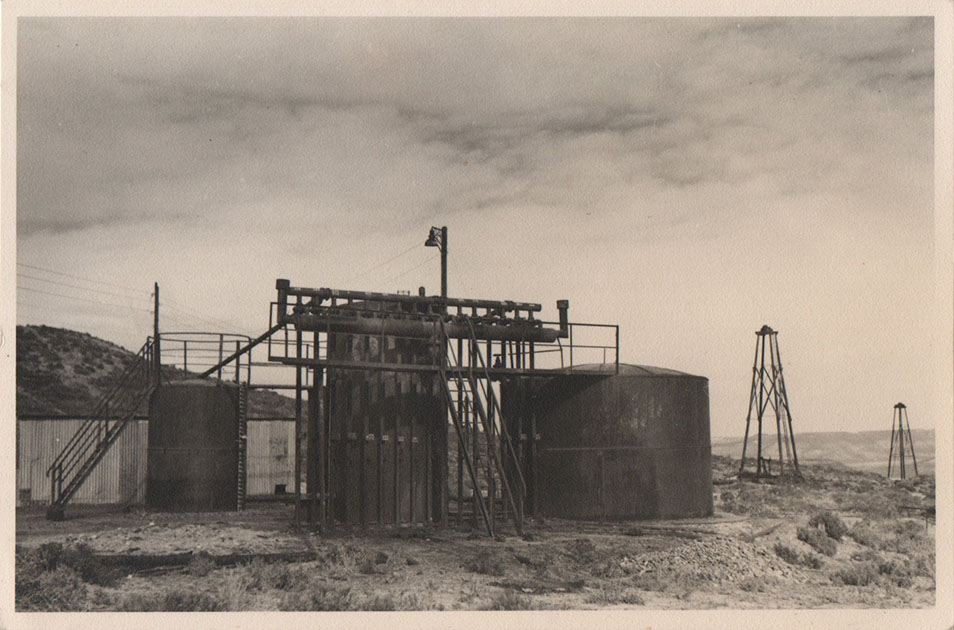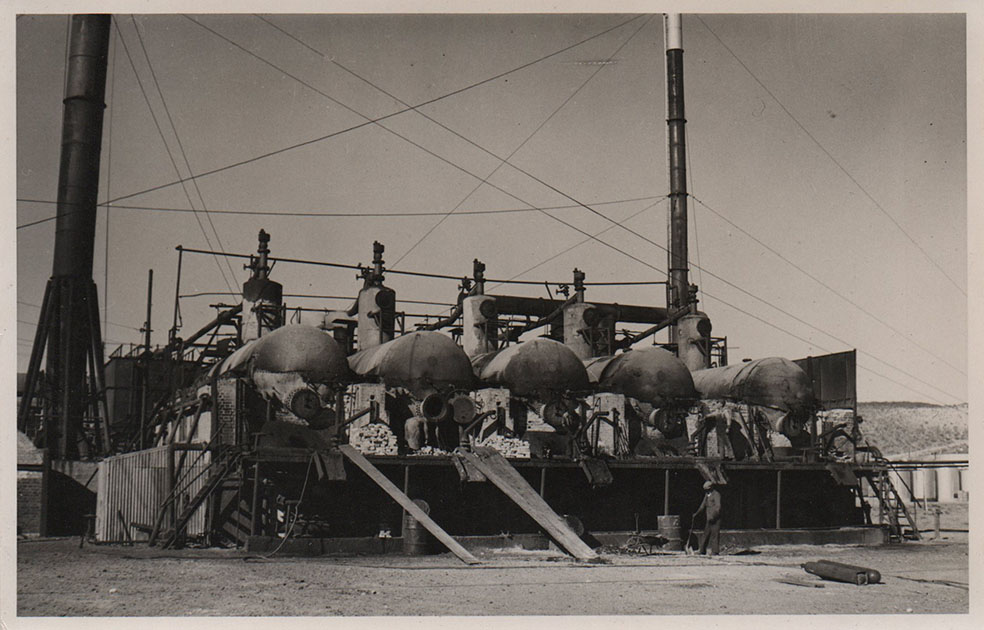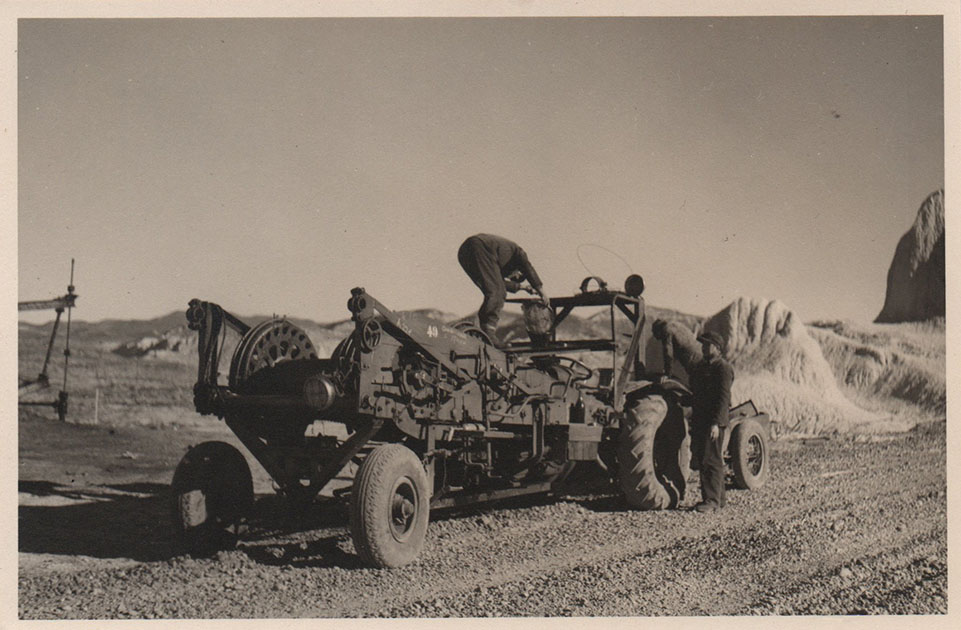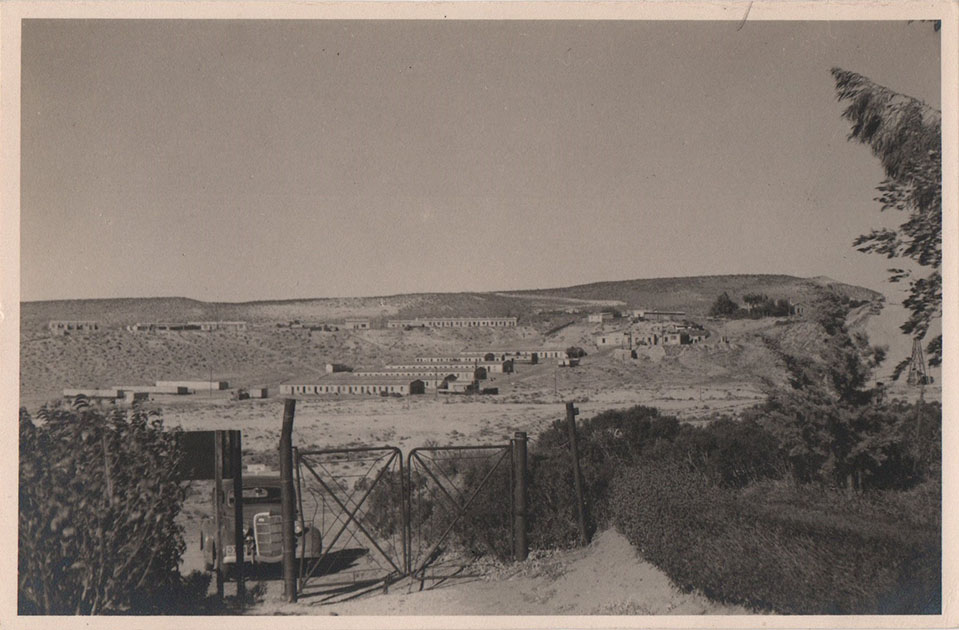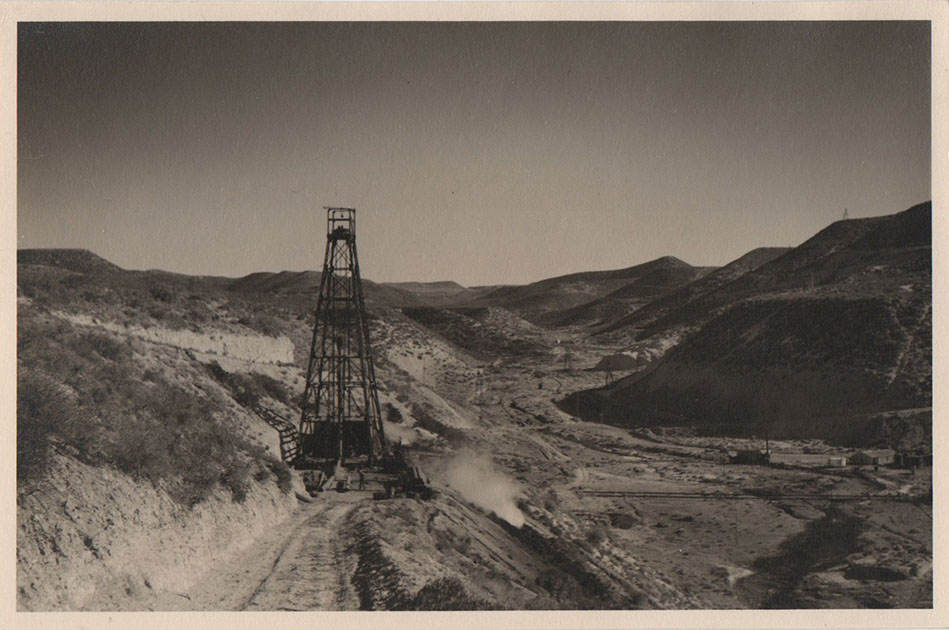Astra. Comodoro Rivadavia. Circa 1933.
Set of 17 gelatin silver prints. White margins. Measures; 16 of them: 9.3 x 14.6 cm / 3.66 x 5.74 in and the remaining 17.8 x 13 cm / 7 x 5.11 in. It is presented in an ad hoc storage and preservation box with its golden titles. All works in good condition.
We can classify the present set in the not very common category of industrial photography. They show us the Astra establishment; its oil wells, the primitive “storks” (extraction pumps) and the winches and towers nestled in the arid Patagonian landscape, the complex distilleries to obtain “gas oil”, naphtha and “kerosene”, the power plant, the rudimentary camp where they lived the workers, and even the image of a river crossing by a truck supported on a floating platform built precariously on two canoes.
In the origins of oil exploitation, the first well was discovered in 1907 and in 1910 the General Directorate of Petroleum Exploitation of Comodoro Rivadavia was created, with the aim of planning, controlling and managing its exploitation, offering sections of 625 hectares in tender public. Just two years later, an exploratory well began to be installed in Lot 138 of Colonia Escalante -also called Colonia Boers, by the South African settlers who escaped after the war against England-, in Comodoro Rivadavia, province of Chubut, and in its proximity, a camp founded by the Astra Argentina Oil Union was built, which led to a town. Without a precise date of its origin, it was adopted on December 12, 1912 as its foundation, the day a girl was born -the first birth- inside a tent; A few years later, it had already gathered 1,500 workers. Successful extraction from December 1916 encouraged its growth.
With the absolute support of Astra, the development with that name advanced, also called “Km 20”, due to the distance between this area and the city of Comodoro Rivadavia, which continued its development with houses, a police station, a school and even a brick factory, an initiative of German capital that was inaugurated in 1918. The oil company, said factory and the train station were key in 1925 for the construction of the San Jorge Lighthouse. A huge advance for the region and for the company was the creation of its distillery, which began operating in 1926 and by the end of the following year it was already selling gasoline in 10 and 15 liter cans.
Years later it was destroyed by fire.
| AUTHOR | FOTÓGRAFO NO IDENTIFICADO |
|---|---|
| ITEM | 6 |
Are you interested in selling some works?
Send us an email briefly indicating
which works you intend to put on sale, and we will respond. click here
Subscribe to our newsletter to be updated.
Check our Newsletters